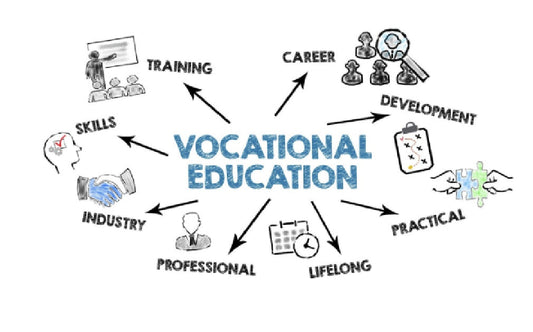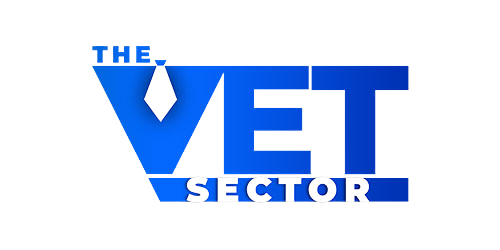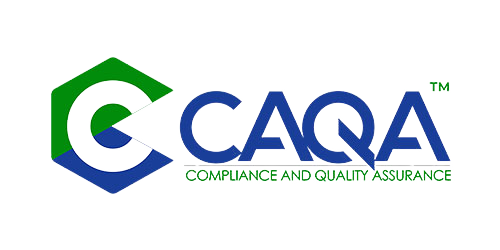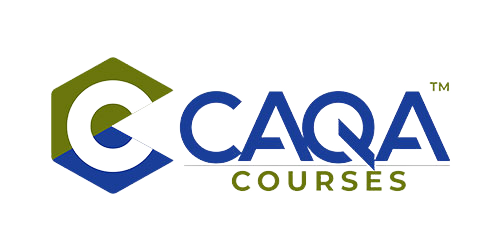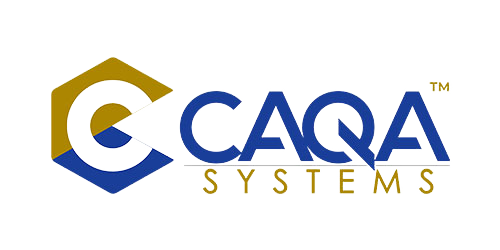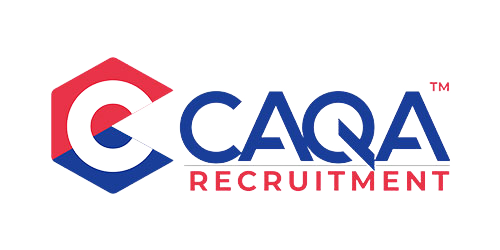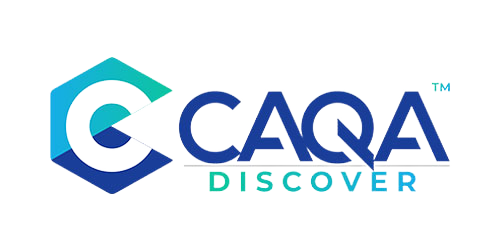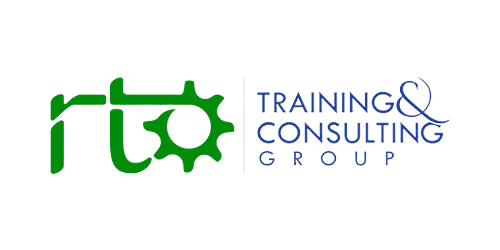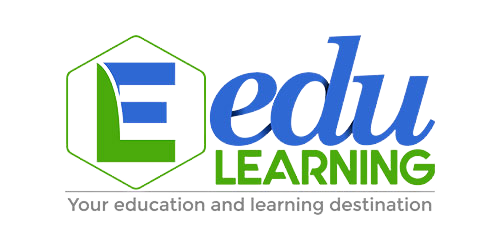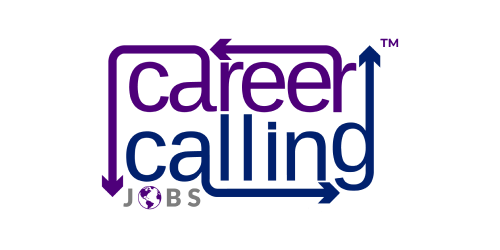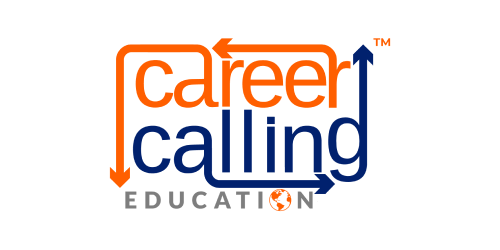The Alignment Imperative: Understanding the VET Industry Connection
Vocational Education and Training (VET) has long been a cornerstone of workforce development, bridging the gap between academic learning and practical, hands-on skills. In Australia, the VET sector plays a pivotal role in preparing individuals for trades, technical roles, and essential services, fuelling industries as diverse as construction, healthcare, hospitality, and community care. Yet, despite its importance, one issue consistently rises to the surface as both a challenge and an opportunity: the alignment of VET programs with industry needs. As the global economy shifts, technology advances, and workforce demands evolve, ensuring that vocational training reflects the real-world requirements of employers has never been more critical. Why does this alignment matter so much, and what happens when it falters? This question lies at the heart of VET's mission and its ability to remain relevant in an increasingly competitive world.
The VET sector in Australia represents a substantial educational ecosystem – a sprawling network of public Technical and Further Education (TAFE) institutes, private Registered Training Organisations (RTOs), and industry partnerships, collectively serving over 5.1 million students annually. In 2023, the sector contributed significantly to the nation's economy, with VET graduates filling critical skill shortages in areas like aged care, renewable energy, and advanced manufacturing. For many learners, VET offers a faster, more affordable alternative to university, promising tangible qualifications—certificates, diplomas, and apprenticeships—that lead directly to employment. Unlike traditional higher education, which often emphasises theoretical knowledge, VET is designed to be practical, hands-on, and immediately applicable in workplace settings. This promise, however, hinges on one key factor: the training must equip students with the exact skills employers need, not just today but also in the future. When this alignment breaks down, the consequences ripple through industries, communities, and the economy at large.
The Value Proposition: Why Alignment Defines VET's Purpose
Industry Involvement and Training Package Development
The Australian Industry and Skills Committee (AISC) and its network of industry reference committees play a vital role in facilitating employer contributions to the development of training packages. This collaborative process is essential for ensuring that vocational education and training (VET) remains relevant and aligned with industry needs. However, the sector faces challenges due to a lack of access to high-level strategic advice on employment forecasting. Such advice was previously provided by now-defunct agencies like the Australian Workplace and Productivity Agency, which acted as a bridge between workforce planning and skills development. Without this critical input, it becomes increasingly difficult for the VET system to prepare for future workforce needs and ensure that skill shortages are addressed proactively.
Challenges in VET Sector Responsiveness
The qualification system within the VET sector has been criticised for its slow response to evolving industry needs. This lag impedes the development of a skilled workforce capable of meeting current and emerging demands, particularly in rapidly changing industries such as technology and healthcare. There is a growing recognition of the need for the VET system to be more agile, adapting quickly to shifts in industry requirements and ensuring that training remains relevant and forward-looking. Greater collaboration with industry stakeholders and the incorporation of real-time labour market data are key areas that need to be strengthened to address these challenges effectively.
VET's primary strength has always been its strong connection to employment outcomes and its focus on practical, job-specific training. Students who invest in a vocational qualification make an explicit trade-off, choosing hands-on skills development over broader academic education. This creates an implicit contract between training providers and students: the expectation that what is taught will directly translate to workplace competency and job readiness. When this contract is fulfilled, the benefits are far-reaching. Employers gain employees who can contribute to productivity immediately, reducing onboarding time and costs. Students secure meaningful employment with competitive wages, able to apply their skills directly in real-world settings.
The broader economy also reaps substantial benefits from a well-functioning VET system. Increased workforce participation, reduced skills shortages, and improved productivity all contribute to national growth. However, when alignment between training and industry needs fails, this entire value chain begins to break down. Students may be left with qualifications that lack relevance, employers struggle to find job-ready candidates, and confidence in the VET system diminishes. This misalignment can lead to wasted public and private investment in skills development, undermining trust in the system’s ability to deliver on its promises. Ensuring the VET system remains adaptive, responsive, and strategically aligned with industry needs is essential for maintaining its value and delivering long-term benefits to individuals, businesses, and the economy as a whole.
Successful Alignment: Partnerships That Power Performance
So, what does successful alignment look like in practice? At its core, it requires a dynamic, ongoing partnership between training providers and industry stakeholders. Employers—whether small businesses, large corporations, or professional bodies—must have a seat at the table, helping to shape curricula, define competencies, and identify emerging trends. In Australia, this process is facilitated by Industry Reference Committees (IRCs) and Skills Service Organisations (SSOs), which update training packages to reflect workplace needs. For example, the rise of sustainable building practices has prompted updates to construction qualifications, incorporating skills like installing solar panels and using eco-friendly materials. In the veterinary sector, the integration of telemedicine and advanced diagnostic tools has spurred new units of competency in animal care courses. When done well, this collaboration ensures that VET graduates hit the ground running, equipped with the latest techniques and technologies.
Effective alignment isn't merely about updating paper qualifications – it requires deep, structural engagement between education and industry. Best practice examples often involve co-location, where training facilities exist alongside or within workplaces. The Australian mining sector demonstrates this approach through partnerships between RTOs and mining companies, creating purpose-built training centers that simulate actual mining environments with current equipment. Similarly, in hospitality, leading TAFEs operate training restaurants open to the public, where students gain experience in commercial kitchens under real-world conditions and pressure. These models go beyond simple consultation to create integrated learning ecosystems where the boundary between training and work becomes increasingly blurred. Such approaches ensure that students experience authentic workplace challenges, use current tools, and develop both technical skills and professional behaviors demanded by employers.
The Challenge of Keeping Pace: When Training Lags Behind Industry
Yet, achieving this level of alignment is easier said than done. One of the biggest hurdles is the pace of change in modern industries. Technology, in particular, is transforming workplaces at breakneck speed. In manufacturing, the shift toward automation and Industry 4.0 technologies—like robotics and 3D printing—has outpaced many traditional VET programs, leaving some graduates versed in outdated machinery rather than cutting-edge systems. In healthcare, the growing use of electronic medical records and telehealth platforms demands digital literacy that older curricula might not address. Even in trades like plumbing or electrical work, innovations such as smart home systems and water-saving fixtures require skills that weren't on the radar a decade ago. Training providers, often constrained by budgets, staffing, or bureaucratic delays, struggle to keep up, creating a lag between what's taught and what's needed on the job site.
This skills gap manifests in various ways. A recently qualified electrician might understand traditional wiring but lack knowledge of home automation systems that integrate lighting, climate control, and security. A commercial cookery graduate might excel at preparing traditional dishes but have limited exposure to plant-based alternatives or dietary restriction accommodations now demanded by consumers. This disconnect creates a skills vacuum that forces employers to invest in extensive on-the-job training or seek workers from overseas – undermining the purpose and value of domestic vocational qualifications. In rapidly evolving fields, the challenge becomes particularly acute, as training packages developed three or four years ago may be teaching practices and technologies that the industry has already moved beyond.
Real-World Consequences: When Alignment Fails
This disconnect has real-world consequences for employers, students, and the economy. Employers frequently report that VET graduates lack the specific skills they require, forcing them to invest in additional on-the-job training—a cost that small businesses, in particular, can ill afford. A 2022 survey by the Australian Industry Group found that 75% of employers experienced difficulty finding workers with the right skills, with many pointing to gaps in vocational training as a key factor. In the veterinary field, for instance, clinics might hire a newly minted vet nurse only to discover they've had little exposure to digital radiography or client management software—tools now standard in modern practice. When graduates falter, employers turn to other solutions, such as hiring overseas workers or poaching talent from competitors, which undermines the VET sector's purpose and leaves students questioning the value of their qualifications.
The economic impact of misalignment extends beyond individual businesses to affect entire industries and regions. When training programs consistently fail to produce workers with needed skills, sectors experience persistent labor shortages, hampering growth and innovation. In rural and regional Australia, where access to skilled workers is already challenging, misalignment can be particularly devastating. Agricultural enterprises might struggle to find machinery technicians familiar with GPS-guided equipment, while regional hospitals may lack allied health professionals trained in telehealth delivery. These gaps slow economic development, reduce service quality, and contribute to regional inequality. For the national economy, persistent skills mismatches represent billions in lost productivity and unrealised potential – a hidden tax on growth that compounds over time.
The Student Perspective: Broken Promises and Career Consequences
Students, too, bear the brunt of misalignment. For many, VET is a significant investment of time, money, and hope. International students, who make up a substantial portion of the sector, often pay upwards of $10,000 per year in tuition, plus living expenses, expecting a clear path to employment in Australia's skills-hungry economy. Local students, including school leavers and career changers, may forgo university or other opportunities to pursue a trade, trusting that their training will lead to stable, well-paid work. When that trust is broken—when a Certificate IV in Automotive Technology doesn't cover electric vehicle repair, or a Diploma of Hospitality misses the mark on current food safety regulations—students face unemployment, underemployment, or the need to retrain at their own expense. The frustration is palpable, with some taking to platforms like X to vent about "wasted time" and "useless courses," amplifying the sector's challenges to a global audience.
This disillusionment can have lasting effects on individuals' career trajectories and attitudes toward lifelong learning. A student who discovers their qualification doesn't meet industry standards may become cynical about vocational education generally, avoiding future upskilling opportunities even when beneficial. Furthermore, the financial impact can be severe – particularly for international students or those from disadvantaged backgrounds who have made significant sacrifices to pursue training. For many, the discovery that their qualification doesn't translate to employment represents not just disappointment but financial hardship as loan repayments begin without the expected income to support them. This pattern threatens to undermine trust in Australia's VET system both domestically and internationally, potentially reducing participation rates just when skilled workers are most needed.
Veterinary Sector Spotlight: Alignment in Animal Care Training
The veterinary sector offers a compelling case study in why alignment matters in specialised vocational fields. Australia's animal care industry is growing, driven by rising pet ownership (reaching record levels during the pandemic), increased demand for livestock services, and a focus on wildlife conservation. VET qualifications, such as the Certificate IV in Veterinary Nursing or the Certificate III in Animal Studies, are critical to meeting this demand, supplying workers to clinics, farms, and zoos across urban and rural settings. However, the field is evolving rapidly. Advances in veterinary medicine—such as minimally invasive surgery, genetic testing, and pain management protocols—require skills that traditional programs may not cover. At the same time, soft skills like client communication and ethical decision-making are increasingly vital as pet owners expect more personalised, empathetic care. If VET courses lag behind these trends, graduates risk being side-lined in a competitive job market, while employers struggle to fill roles with qualified candidates.
The consequences of misalignment in veterinary training extend beyond career prospects to affect animal welfare directly. A vet nurse without current knowledge of pain assessment techniques might fail to recognise suffering in patients. A wildlife carer lacking training in current rehabilitation protocols might inadvertently harm the animals they're trying to help. In rural areas, where veterinary services are often stretched thin, the skills gap can be particularly pronounced, with newly qualified staff unable to operate specialised equipment or manage complex cases without supervision. As pets increasingly receive human-grade medical care, and as livestock production faces heightened scrutiny around welfare standards, the alignment of veterinary VET programs with current best practices becomes not just an economic issue but an ethical imperative affecting millions of animals annually.
Regulatory and Funding Challenges: Structural Barriers to Alignment
Regulatory and funding issues further complicate the picture of industry alignment in Australia's VET sector. The Australian Skills Quality Authority (ASQA) oversees RTOs, ensuring they meet national standards, but its focus is often on compliance rather than innovation or outcomes. Training packages, while regularly reviewed, can take years to update through the formal consultation process, leaving providers locked into outdated content even when they recognise the need for change. Meanwhile, government funding for VET has fluctuated dramatically, with a 2023 report from the Productivity Commission highlighting a decade-long decline in real terms. Quality RTOs, in particular, face resource constraints, limiting their ability to invest in modern equipment or hire industry-experienced trainers who command competitive salaries. Private RTOs, while more agile, vary widely in quality—some excel at aligning with industry, while others prioritise profit over outcomes, churning out graduates with credentials but little substance. This uneven landscape erodes confidence in the sector's ability to deliver consistent, industry-relevant training.
The funding model itself often creates perverse incentives that work against alignment. Government subsidies typically flow based on enrollment and completion numbers rather than employment outcomes or employer satisfaction. This encourages providers to focus on maximising student numbers in low-cost courses rather than investing in high-quality, industry-aligned programs that might require expensive equipment or smaller class sizes. The result is a system that rewards volume over value, quantity over quality. For industries requiring specialised training – from veterinary care to advanced manufacturing – this approach fails to produce graduates with the depth of skills needed. Meanwhile, inconsistent funding across states and territories creates a patchwork system where training quality and industry alignment vary dramatically by location, undermining national workforce development goals.
Solutions for the Future: Building Bridges Between VET and Industry
So, how can VET strengthen its alignment with industry needs? The answer lies in a multi-pronged approach that balances flexibility, investment, and collaboration. First, training providers must deepen their ties with employers, moving beyond occasional consultations to embedded partnerships. This could mean co-designing courses with input from local businesses, offering work-integrated learning as a core component, or establishing industry advisory boards with real decision-making power. In the veterinary space, for example, partnerships with the Australian Veterinary Association (AVA) or regional clinics could ensure that curricula reflect the latest clinical practices and regional needs, such as rural animal health. These partnerships should be formalised, resourced, and evaluated based on tangible outcomes rather than treated as optional extras or marketing opportunities.
Second, technology must become a priority investment area for the VET sector. Training providers need funding to acquire up-to-date tools—whether that's virtual reality simulators for trades, diagnostic equipment for vet nursing, or software for business courses. Online and hybrid delivery models, accelerated during the COVID-19 pandemic, should be expanded to teach digital skills and reach remote learners. For instance, a plumbing apprentice could use augmented reality to practice installing smart water systems, while a hospitality student could simulate managing a restaurant's online booking platform. These innovations not only align training with industry but also make it more accessible and engaging for diverse learners. Technology investment should be viewed not as an optional enhancement but as core infrastructure essential to VET's purpose.
Policy Imperatives: Government's Role in Facilitating Alignment
Third, the government has a crucial role to play in creating the conditions for successful industry alignment. Beyond increasing funding to reverse the decade of decline, policymakers should streamline the process for updating training packages, empowering IRCs to respond to industry shifts in real time rather than through cumbersome multi-year review cycles. Incentives—such as tax breaks for businesses that train apprentices or subsidies for RTOs that adopt cutting-edge programs—could spur alignment by making it financially viable. At the same time, ASQA's oversight should shift toward measuring outcomes rather than just processes, evaluating graduate employability and employer satisfaction as key indicators of quality. A national skills forecasting system, integrating data from employers, unions, and economic analysts, could also guide VET priorities, ensuring that training anticipates future needs, not just current ones.
Funding models require fundamental reform to reward quality and outcomes rather than just student numbers. Performance-based funding that considers graduate employment rates, employer satisfaction, and wage growth would incentivise providers to prioritise industry alignment. Additional resources should target areas of critical skills shortage or strategic economic importance, enabling VET providers to invest in specialised facilities and expert trainers. For international education specifically, policies should ensure that students receive training that genuinely prepares them for Australian workplaces, with clear pathways to employment for those wishing to remain in the country. These reforms would require greater coordination between federal and state governments, breaking down the siloed approach that has fragmented Australia's VET system.
Student-Centered Approaches: Empowering Informed Choices
Finally, students themselves must be part of the solution through better information and support systems. VET providers should offer clearer pathways, counseling, and career guidance to help learners choose programs that match both their interests and market demand. Transparency about job prospects—backed by data on employment rates and salaries—can prevent mismatches and build trust in the sector. For international students, who often face additional barriers like language and visa restrictions, tailored support could make the difference between success and disillusionment. Career education should begin earlier, with school students receiving accurate information about vocational pathways and their alignment with industry needs. Digital tools like skills-matching platforms and interactive career maps could help prospective students visualise how different qualifications connect to employment opportunities, making the alignment between training and industry more transparent.
Work-integrated learning should become standard practice across all VET qualifications, ensuring students gain authentic workplace experience throughout their training rather than merely at its conclusion. This approach – whether through apprenticeships, internships, or industry projects – creates natural feedback loops between employers and training providers, highlighting alignment gaps in real-time. For students, it provides crucial exposure to workplace culture and expectations while building professional networks that facilitate employment. In fields like veterinary nursing, early clinical placements can help students understand the realities of the profession and develop essential soft skills alongside technical competencies. Expanding these opportunities, particularly in regional and rural areas, would strengthen alignment while improving student outcomes.
Alignment as the Foundation of VET's Future
The stakes of industry alignment in Australia's VET sector are high. When it works, the benefits are profound: skilled workers drive productivity, businesses thrive, and communities grow stronger through sustainable employment and economic development. In the veterinary sector and beyond, aligned training translates to better service delivery, innovation, and professional satisfaction. But when alignment fails, the costs are equally steep—wasted potential, economic stagnation, and a generation of learners left questioning the value of vocational pathways. As Australia faces complex workforce challenges – from an aging population to digital transformation – the need for a responsive, industry-aligned VET system has never been greater.
Australia's VET system has the foundation to lead globally, but only if it keeps pace with the industries it serves. By fostering deeper collaboration between educators and employers, embracing technological innovation, reforming funding and regulatory frameworks, and empowering students through better information, VET can fulfill its promise as a launchpad for careers and a lifeline for the economy. The time to act is now—because in a world that never stops changing, standing still is not an option. Industry alignment isn't just a technical requirement or a quality indicator – it's the very essence of what makes vocational education valuable to individuals, businesses, and society. By recommitting to this fundamental purpose, Australia's VET sector can ensure that every qualification represents not just knowledge gained but capabilities that drive our economic future.





